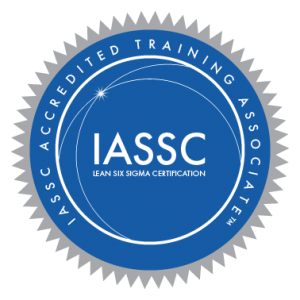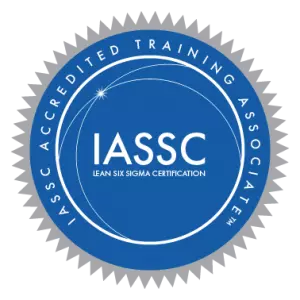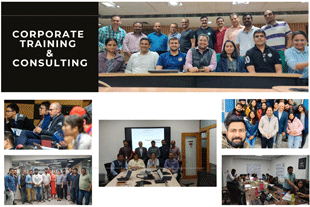Yellow Belt Certification
Six Sigma yellow belt certification is a first-level certification in the six sigma family. Six Sigma Yellow Belt certification is aimed at those who are new in this Six Sigma area and have a small interest in roles and responsibilities for the need to gain a foundation-level understanding of how the Six Sigma methodology works.
- Yellow belt Six Sigma certified professionals are generally entry-level professionals in the industry and are expected to deliver an overview of Six Sigma DMAIC methodology and they are one who moves into six sigma project management by getting certified as Green Belt Six Sigma.
- The Six Sigma yellow belt certification is a global credential that is internationally accredited and recognized in fortune organizations.
What is Six Sigma Yellow Belt Certification?
Six Sigma Yellow Belt certification is a course that covers the basics of Six Sigma, a quality management methodology. The course is designed for those who want to learn more about Six Sigma and how it can be used to improve quality in businesses. The certification provides an overview of the Six Sigma approach and tools, and how they can be used to identify and solve quality problems.
What is Six Sigma Yellow Belt Certification Cost?
The cost of a Six Sigma Yellow Belt certification can vary depending on where you get your certification. The average cost is around $150, but it can be as low as $40 or as high as $350. There are many different Six Sigma certifications available, so make sure to do your research before choosing one.
How to Get a Yellow Belt Certification Free of Cost?
There are many ways to get yellow belt certification for free. One way is to take an online course. Many online courses offer certification for free or at a reduced price. Another way is to participate in a training program offered by a company or organization. Many times, these programs will offer certification for free or at a reduced price. Finally, some companies and organizations offer certification programs that are open to the public. These programs may charge a fee, but they often have discounts or scholarships available.
Global Recognition of Your Certification




Global Recognition of Your Six Sigma Yellow Belt
- Lean Six Sigma Curriculum and Certification Accredited by The Council of Six Sigma Certification, USA
- Certification Accredited by International Quality Federation, USA
- Training aligned and Acknowledging The American Society for Quality, USA
- Certification accredited by UKAC, United Kingdom
- Certification accredited by IASSC ATA USA
- Certification accredited by American Board of Accreditation Services, USA
- Certification Accredited by UK Cert for ISO/IEC 17024:2012
Yellow Belt Six Sigma Certification is an introductory problem-solving course that gives you an overview of Lean Six Sigma. It’s the most practical, easy way to start your Lean Six Sigma journey and start delivering results.
The Fundamentals of Six Sigma
- Defining a Process
- Critical to Quality Characteristics (CTQ’s)
- Cost of Poor Quality (COPQ)
- Pareto Analysis (80:20 rule)
- Basic Six Sigma Metrics, including DPU, DPMO, FTY, RTY Cycle Time
Six Sigma Project Initiative:
- Selecting Lean Six Sigma Projects
- Building a Business Case & Project Charter
- Developing Project Metrics
- Financial Evaluation & Benefits Capture
Lean & Six Sigma:
- The Lean Enterprise
- Understanding Lean
- The History of Lean
- Lean & Six Sigma
- The Seven Elements of Waste
- Overproduction, Correction, Inventory, Motion, Overprocessing, Conveyance, Waiting.
- 5 5S, Sort, Straighten, Shine, Standardize, Self-Discipline
- The Basics of Six Sigma
- Meanings of Six Sigma
- General History of Six Sigma & Continuous Improvement
- Deliverables of a Lean Six Sigma Project
- The Problem Solving Strategy Y = f(x)
- Voice of the Customer, Business, and Employee
- Six Sigma Roles & Responsibilities
Measure, Analyse, Improve Phase
- Process Definition
- Cause & Effect / Fishbone Diagrams
- Process Mapping, SIPOC, Value Stream Map
- X-Y Diagram
- Failure Modes & Effects Analysis (FMEA)
- Six Sigma Statistics
- Basic Statistics
- Descriptive Statistics
- Normal Distributions & Normality
- Graphical Analysis
- Measurement System Analysis
- Precision & Accuracy
- Bias, Linearity & Stability
- Gage Repeatability & Reproducibility
- Variable & Attribute MSA
- Process Capability
- Capability Analysis
- Concept of Stability
- Attribute & Discrete Capability
- Monitoring Techniques
Control Phase
- Lean Controls
- Control Methods for 5S
- Kanban
- Poka-Yoke (Mistake Proofing)
- Six Sigma Control Plans
- Cost-Benefit Analysis
- Elements of the Control Plan
- Elements of the Response Plan
This Yellow belt Six Sigma Certification is a global credential that gives you a competitive advantage in the job industry and sets your profile to start a career in quality, data analysis, project management, risk management, process improvement, BPO, KPO, RPO sectors, and many more.
ISEL GLOBAL Yellow Belt certification has attracted the largest and most respected names including Microsoft, IBM, Dell, Honda, Intel, Samsung, Accenture to name a few
Professional prefer yellow Belt Six Sigma Certification generally for,
- Higher Salary
- Career Advancement
- Job Security
- Help Your Organization Eliminate Errors
- Leadership Opportunities
Also, the Six Sigma Yellow Belt Online course helps you to,
- Learn to define and understand quality concepts and their evolution.
- Learn lean Six Sigma and why it is necessary to sustain business improvement.
- Learn the explain the role of Six Sigma in customer service and continual improvement.
- Learn to apply and implement the Define, Measure, Analyze, Improve and Control problem-solving methodology
- Learn to Examine the statistical background supporting Six Sigma projects.
- learn to compare the various tools usually used in a Six Sigma project.
- Learn how to deploy Six Sigma and assess organizational readiness to launch a successful Six Sigma project
On successful completion of the course and course requisites, the candidate will receive an Internationally Accredited and Global Credential in Certified Lean Six Sigma Yellow Belt Certification.
This course offers Lean Six Sigma Certification Validation Tool for Employers
Your Lean Six Sigma Certification Validation Tool can be used by employers, clients, and other stakeholders to validate the authenticity of the Lean Six Sigma Certifications you have received. Using the programming code located on your certified LSS certification, one can see all your training and certification details online.
















.jpg)

.webp)



















